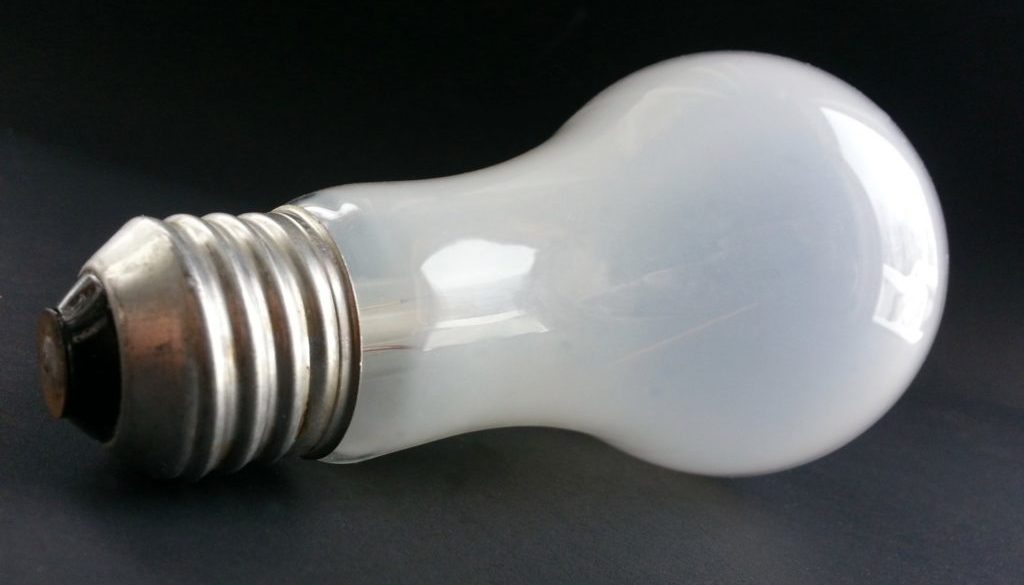New Lighting Standards Kick in, But Some Still in Limbo
By Lauren Urbanek, Natural Resources Defense Council
Schools, hospitals and offices across the country will start saving money on their utility bills as a result of the new energy efficiency standards for fluorescent tube lights going into effect Friday. With more than 2 billion of these bulbs in use nationwide, the total savings will add up to $2 billion to $5.5 billion over the next 30 years.
Fluorescent tube lights might not be anyone’s personal favorite, but these workhorse bulbs are often on for more than 12 hours a day, and each commercial building in the country has about 300 of them on average.
As of Friday (January 26), new fluorescent tube lights will be required to be 23 percent more efficient than those sold before 2012, and 4 percent more efficient than bulbs sold over the past five years. The incremental savings may seem small, but the savings across the board could reach $5.5 billion once all the bulbs in use are replaced with the more efficient version. The new bulbs pop right in to old fixtures and do everything the old bulbs do — they just cost less to operate.

The fluorescent tube lighting standards are one of five efficiency updates for appliances and equipment that take effect in 2018, which means that less efficient models manufactured after a certain date can no longer be sold in the U.S. This is the result of standards that were developed at the U.S. Department of Energy (DOE) over the past few years as part of the DOE’s hugely effective energy efficiency standards program. Over the past 30 years, this program has quietly saved consumers billions of dollars in electricity costs, and is on track to save $2 trillion by 2030.
In spite of this proven success, the DOE has failed to publish a handful of standards that should go into effect starting in 2020. NRDC is fighting this $8 billion delay in court. In the meantime, here’s some good news about standards that will save consumers energy and money starting this year.
Other Standards Taking Effect in 2018
Clothes washers in homes, apartment buildings and laundromats already got an efficiency boost this year, effective January 1. Clothes washer standards have already been saving consumers money for more than 30 years, and there are still savings to be had. Since 1987, when Congress established the first national standards for residential clothes washers, clothes washer energy use has decreased substantially: an average new washer in 2014 used 75 percent less energy than one in 1987.
The standards that took effect this year are part two of a set of standards negotiated back in 2010, and represent a significant improvement for top-loading washers. Models sold this year will use 18 percent less energy and 23 percent less water than those sold since the first tier went into effect in 2015.
NRDC has been a strong advocate for improving the efficiency of battery chargers, which will be 10 percent more efficient for all chargers manufactured or imported after June 13, 2018. The average American household has 15 to 20 chargers, running everything from phones and laptops to vacuum cleaners. More than 500 million are sold every year. The new standards will save 500 million kilowatt-hours of electricity annually, enough to power all the households in a city of 100,000 people for a year.
The first stage of new standards for rooftop air conditioners, which heat or cool more than half of the commercial floor space in the United States, also became effective on January 1, 2018 — kicking off the savings for the DOE’s most powerful efficiency standard yet. Over the next 30 years, this two-part standard will save as much energy as all the coal burned for electricity nationwide, and $50 billion in heating and cooling costs for businesses.
Commercial ice makers sold this year for use in hotels, restaurants, and health care facilities will use 10 to 25 percent less energy. This upgrade will save U.S. businesses $942 million in energy costs over the next 30 years, with a typical owner saving between $200 to $800 over the life of the ice maker.
Looking Ahead
That’s a bit of good news to kick off this year. However, the Trump administration’s failure to publish new energy efficiency standards for portable air conditioners, uninterruptible power supplies, air compressors, and commercial boilers means the compliance date for those standards will be pushed several years into the future. NRDC was in court recently to make our case against this illegal move by Trump’s DOE. Furthermore, DOE has already missed legally required deadlines for other standards, and has indefinitely delayed development of 20 efficiency standards.
Another issue to watch this year will be potential changes to the DOE’s longtime standards-setting process, which is a transparent, years-long endeavor that involves input from manufacturers, utilities, top research scientists, energy efficiency advocates, and the public. This process has successfully delivered predictability for manufacturers and energy savings of $500 per year for the average household.
While it’s not a bad idea to look for ways to improve, changes that would make it harder for the DOE to set strong efficiency standards should be nonstarters. Also, a process review shouldn’t serve as an excuse for missing legally required deadlines for issuing standards. Considering that the DOE is already behind schedule, the agency should work on getting consumers the savings they need and manufacturers the certainty they require. Federal efficiency standards are a trillion-dollar savings program that needs to keep moving forward – we hope the Trump administration will see the light.

